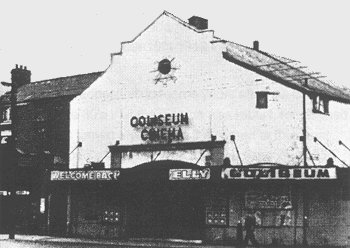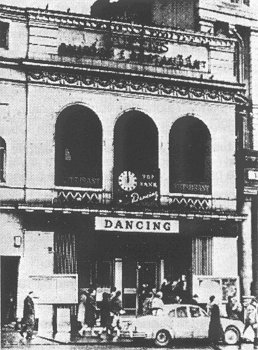







 |
Time of
Decline and Demise
The incredible success of the cinema during the 30's
and 40's had to come to an end sooner or later. It was during the
50's that the situation began to change, although there is no one
easy reason or explanation for the decline.
The rise of television as the major source of home entertainment must
have been a significant factor but it is too easy to lay the total blame
at the door of television. The very nature of the films on offer had
changed from the wholesome family entertainment to a greater emphasis on
sex and violence and as a result the X Rated film!
There were other factors which must be
considered. By the 50's the vast majority of cinemas were parts of the
two major circuits, and this was just as much the case in the
Wolverhampton area. As a result, the smaller and independent cinemas
found it increasingly more difficult to compete and get the latest film
releases and so many of them began to close. The large number of circuit
cinemas meant that the circuits themselves began to consider
rationalisation and reduction of their assets i.e. the cinemas. There
were just too many!
Another significant factor may also be the general change in the
notion of community, especially as a product of increased mobility and
prosperity. As a result, more people sought their leisure outside their
immediate community and therefore away from their own local cinema.
Also, people began to consider new forms of leisure activity.
Whatever the reasons for the general decline in the cinema, it is now
necessary to consider the individual stories of our own local
cinemas, both the flea pits and the super
cinemas. Towards the end of the 1950's one of the most
influential of local cinema entrepreneurs, C.S. Joseph and his Pine
Pictures Company began to pull out of the local cinema business,
especially as his twenty one year lease on the Olympia and Coliseum came
to an end.

The Coliseum Cinema, Dudley Road .
(Welcome back from the Telly) |
The company was sold to Vincent Wareing
in 1959. Despite some valiant attempts at keeping the cinemas alive,
he was forced by declining attendances, decaying premises and other
problems to close both the Olympia and Coliseum cinemas within seven
months of each other. The Coliseum closed on December 19th 1959 |
The closure of the Scala
however came quite suddenly and actually occurred on December 1st
1956 with the showing of 'Beyond Mombasa' starring
Cornel Wilde and 'Miami Expose' starring Lee J.
Cobb. The building has had something of a chequered career over the
forty years since its closure in 1956. It has been a Bingo Hall, a
Wrestling Venue, a Dance Hall and is currently the First Base Night
Club. The building has recently been re-painted and much of its
former glory (at least externally) has been re-captured. One of the
town's most popular cinemas was, as stated above, the Queen's. As a
result of its popularity the Queen's was largely able to cope with
the competition from the super cinemas during the 30's and 40's.
However, it was during the 1950's that the Rank Organisation
(the owners of the cinema) began their rationalisation programme.
|

The Queen's Ballroom and Restaurant. |

The Queen's Ballroom and Restaurant 1968. |
Their original plans (1957) for the
cinema was to convert it into a dance hall but the company failed to
get a licence. Next, Rank attempted to auction the cinema but this
also failed. Finally, on February 7th 1959 the last picture
show did take place at the Queen's with the showing of two British
comedies, 'The Square Peg' with Norman Wisdom and
'The Lavender Hill Mob'
with Alec Guinness. It had been decided by the Rank Organisation
that the dance hall proposal would go ahead! The Queen's Ballroom
opened on May 15th 1959 and was to become a venue for many of the
groups of the 60's including the Kinks, John Mayall's Blues Breakers
and the Small Faces. It was to remain a ballroom until 1969. The
building was finally demolished in 1978. The site was redeveloped by
Lloyd's Bank as part of its Queen Square branch. |
| The Carlton was very much the one
man show of its owner, Norman Burton. It is not therefore surprising
that when he became very ill in 1960, the cinema was put up for
sale. The final film at the Carlton was 'Tommy the Toreador'
starring Tommy Steele. The final show was on April 2nd 1960. The
premises became the property of the Household Stores and
was used as a warehouse. It was ultimately demolished and the site
has become part of the great transformation that has occurred in the
Horseley Fields area of the town. |
 |
|
 |
Next
Page |
|
Contents |
|
|








 |





















